Posted by Josh Elijah on 26th Feb 2022
SwitchBlox Nano 5V Output Performance
Introduction
SwitchBlox Nano contains a 5V output that can be used for powering downstream devices. This page details basic characterisation tests that will be useful if you plan to use this 5V output in your application.
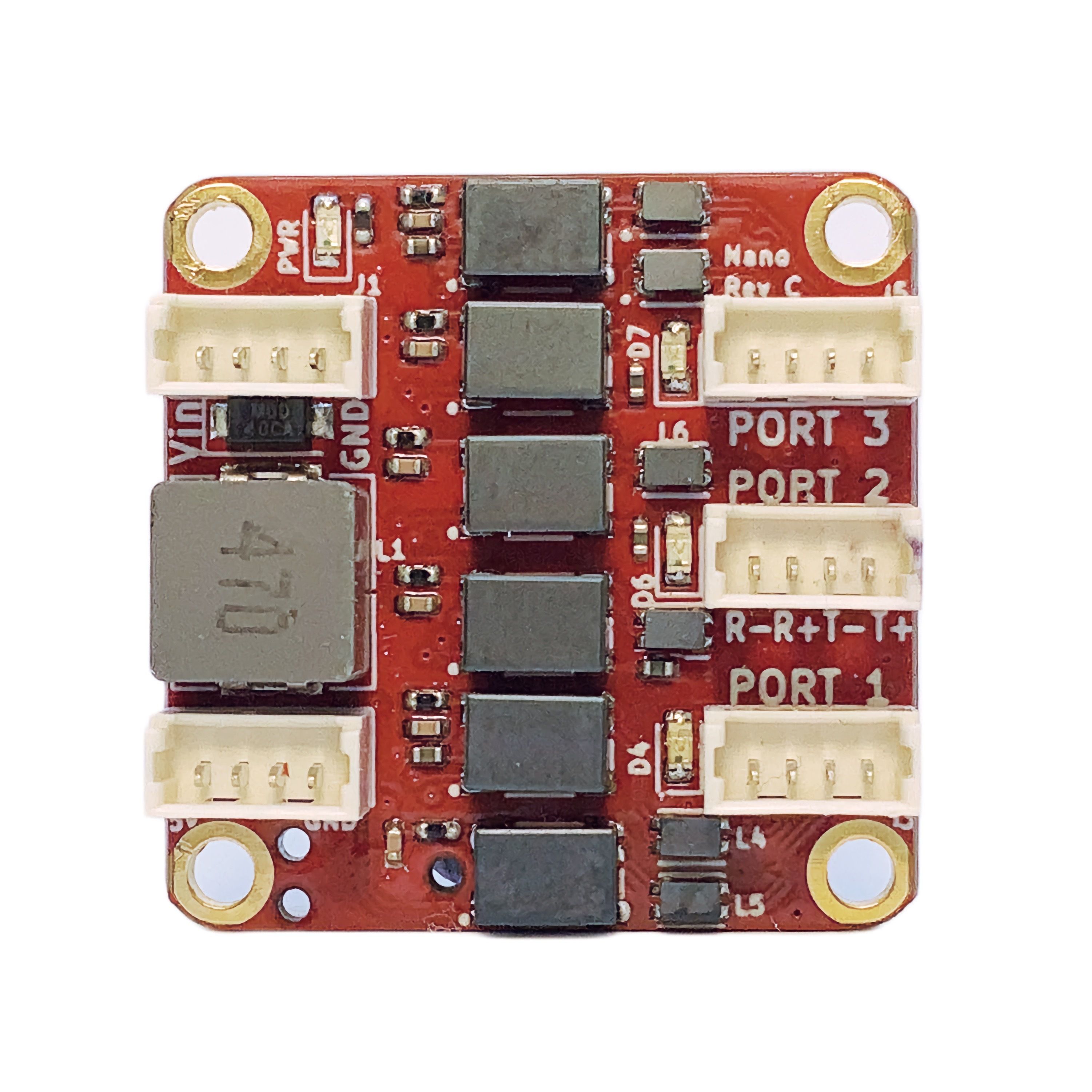
These tests relate to SwitchBlox Nano Revision C, D and E (current revision).
Test setup
- Ambient temperature = 20°C
- Airflow = 0 LPM
- SwitchBlox operation = Idle, no networking
- Input Voltage = 24V
0A Output Current
DC Level
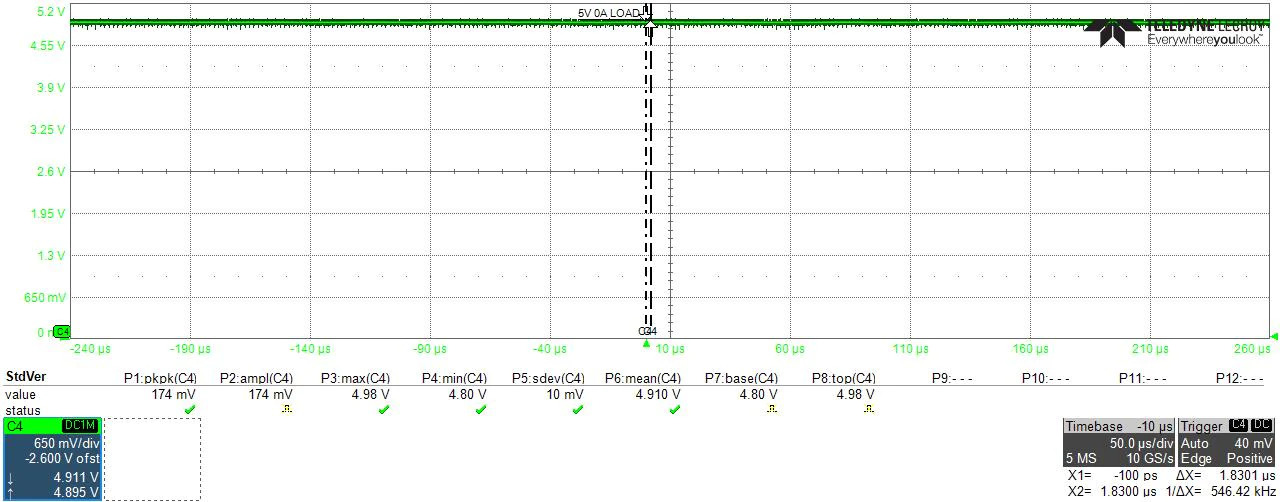
Mean voltage = 4.91V
AC Coupled (to show ripple)
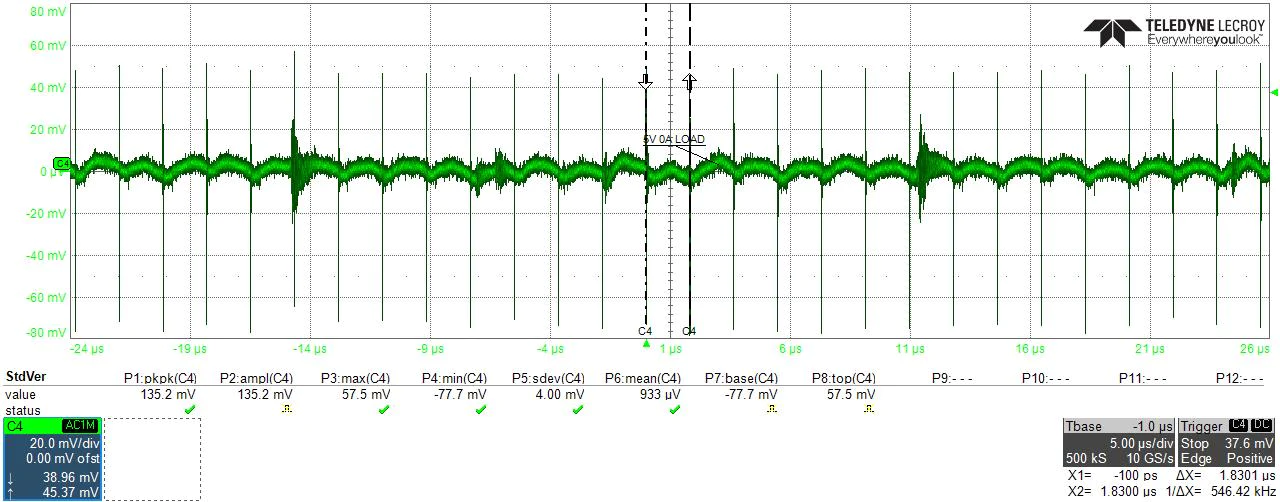
Peak to peak ripple = 135.2mV (2.7% of DC level)
Ripple frequency = 546.42Khz
Heat on board
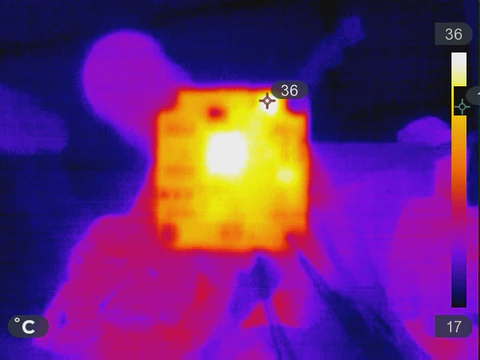
Maximum heat after 3 minutes = 36°C (16°C rise from ambient)
1A Output Current
DC Level
Unchanged
AC Coupled (to show ripple)

Peak to peak ripple = 120mV (2.4% of DC level)
Ripple frequency = 546.42Khz
Heat on board
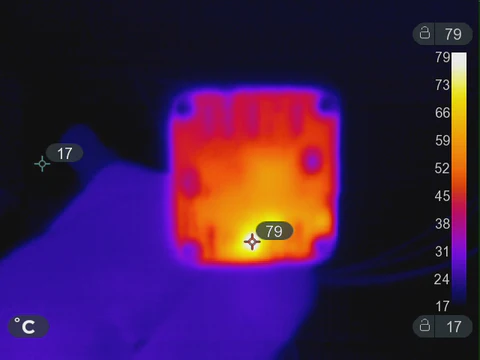
Maximum heat after 3 minutes = 79°C (59°C rise from ambient)
Summary of Results
The output ripple at both the 1A appears less than the ripple at 0A. This is likely because no-load conditions can cause higher oscillations on the output of a switching regulator. Ultimately the ripple seems bounded to around 140mV-200mV.
The frequency of the ripple is around 546KHz. This makes sense as the stated switching frequency of the onboard regulator is 555KHz.
Loads above around 1.1A resulted in the regulator voltage output dropping, causing SwitchBlox Nano to power off.
The temperature increase at 1A is significant, at around 59°C. This is one of the tradeoffs with the small size of this board, and is probably not easy to mitigate without external cooling (either a heatsink or increased airflow).

